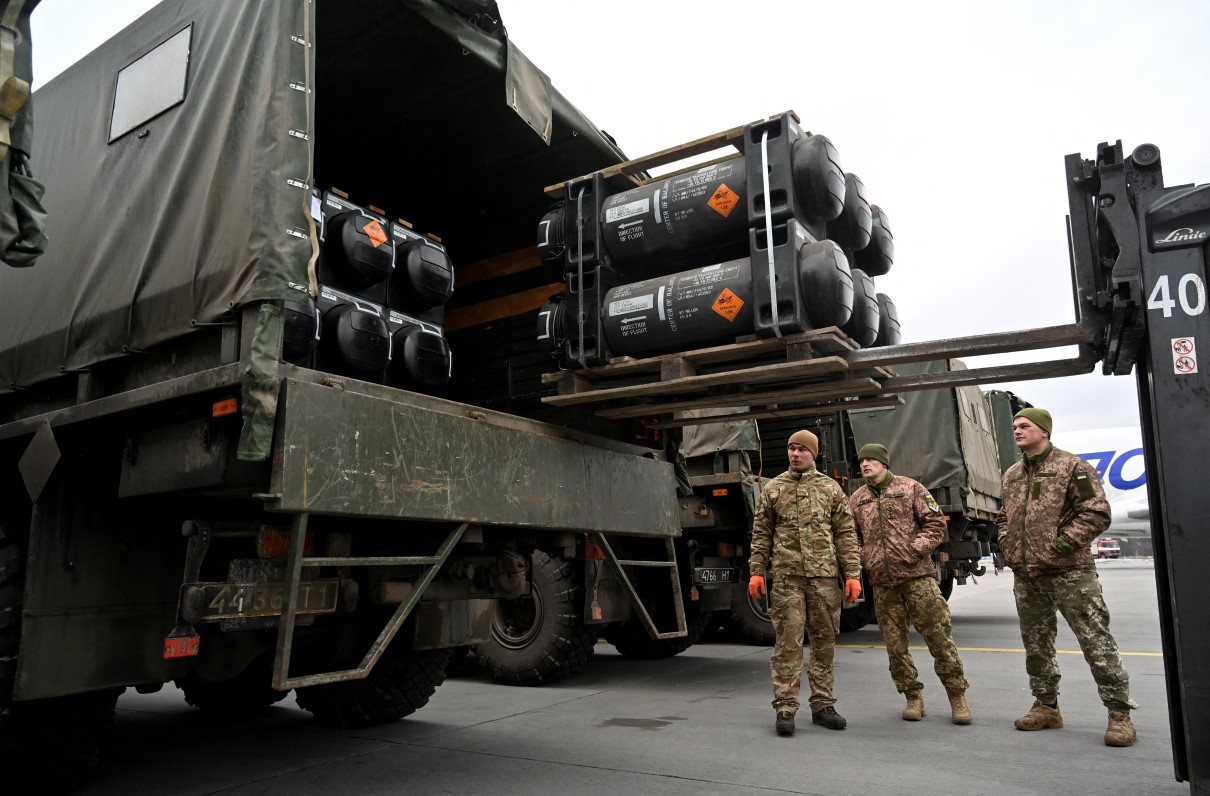Editor’s note: This article by Steve Beynon originally appeared on Military.com, a leading source of news for the military and veteran community.
Sgt. 1st Class Chris Freymann never thought he'd have such a direct role in the fight against Russian forces invading Ukraine. But as the war raged, he became a kind of ad hoc, over-the-phone tech support for Ukrainians trying to use Javelin missiles while under fire.
They messaged with questions; Freymann sent answers. In return, he got photos and videos of the Russian tanks they destroyed.
Before the war, Freymann, a cavalry scout in the Washington state National Guard, had been the lead instructor in the U.S. military's program that trained soldiers in Ukraine how to use the shoulder-fired tank-killing missiles. He trained about 200 Ukrainian troops during his months with the program.
Russia launched its invasion in February, after U.S. trainers left. But the relationships Freymann made remained. His former students -- now troops fighting on the front lines -- again reached out for help on operating the Javelins as they encountered technical issues or forgot details.
"When the war started, I had a lot of guys hitting me up on WhatsApp," Freymann told Military.com. "One of our linguists, her husband was one of the few soldiers who were left. A lot of the students trained by the other [Guard units] died."
[RELATED: MOAA Member Assisting With Training, Growing EOD Teams in Ukraine]
Freymann would relay information on operating the Javelin to the linguist. Her husband, who was in the fight, would then send Freymann photos and videos of destroyed Russian tanks. Freymann says at least four tanks were destroyed after some of his over-the-phone coaching.
Capt. John Bartkowski, a Washington state infantry officer, was in command of the Javelin course Freymann instructed along with a handful of other soldiers.
The pair adopted much of their doctrine from Fort Benning, Georgia's Heavy Weapons Leaders Course. Typically, Javelin training for U.S. soldiers might take about a week, but it took two to three weeks to train the Ukrainians. For one thing, training manuals and PowerPoint presentations had to be translated.
"The language barrier did present challenges," said Bartkowski, who commanded the training between April and December 2021.
Bartkowski said it has been a "surreal" experience training the Ukrainians and watching them fight against the Russian invasion, which was ordered by Russian President Vladimir Putin despite international condemnation and a raft of sanctions from the U.S. and other nations.
"We never thought six months later they'd be at war with a near-peer enemy. We didn't think it would be so soon," he said. "Seeing the impact we had make a difference in the war is astounding."
[MOAA INTERVIEW: Former NATO Supreme Allied Commander Talks War in Ukraine]
Freymann's previous students worked through the linguist, who had assisted the National Guard during the earlier deployment, to get past the language barrier. Though some Ukrainians reached out to him directly, Freymann said he often had to use Google Translate to make sense of their questions.
A key problem Ukrainians were having centered on the massive battery used to power the Javelin and its optics, the Command Launch Unit, or CLU. That optics system is used for the missile but is also employed to observe enemy movements from a far distance.
"They were running out of the brick batteries and were using motorcycle and car batteries to power the CLUs," he said.
The technical support and over-the-phone retraining is all on Freymann's own time. Toward the end of his deployment in Ukraine, he had a stroke and is still recovering at Joint Base Lewis-McChord in Washington state.
Meanwhile, the Javelin has become the signature weapon of the war in Ukraine, playing a massive role in the underdog military halting the movement of Russian armor and killing scores of soldiers -- forcing Putin to move his forces east and abandon plans to take the capital, Kyiv.
The National Guard has been training Ukrainians since 2015, with units from numerous states rotating through on generally nine-month missions. The Florida National Guard was pulled from Ukraine just before Russia invaded but has continued training fighters in Germany.
"I'm sitting here still getting messages of 'thanks' from these guys and that's the payoff," Freymann said.
Support MOAA Charities
Your generosity will benefit the work of The MOAA Foundation and MOAA Scholarship Fund. Click for details.
